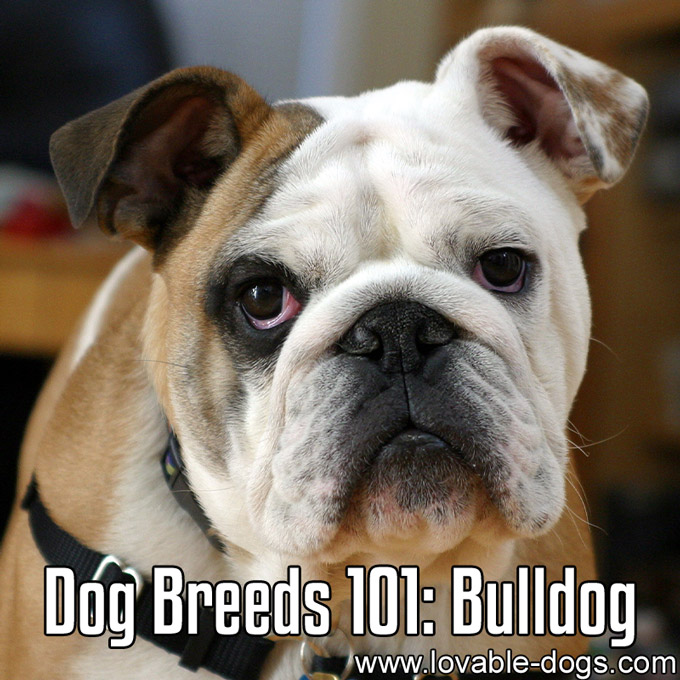
Dog Breeds 101: Bulldog – Image To Repin / Share
Photo – Wikipedia – lic. under CC 3.0
Originating from England, the Bulldog is a breed of dog that is best distinguished by its wrinkled face and flat nose. Bulldogs were very popular in England during the 1800s. They were actually used to fight bulls for people’s entertainment. [1] Therefore, these dogs developed ferocious temperaments and muscular bodies. Eventually, the involvement of dogs in this sport was considered to be cruel and mercifully the practice was put to an end with the Cruelty to Animals Act of 1835.
This short-legged compact dog is medium-to-small sized. The Bulldog has a large and flat black nose. The acceptable coat colors for this breed include fallow, white, pale yellow, fawn, solid red, and piebald.
Although the Bulldog comes from a violent history, in modern times this dog is a gentle breed. They have immense courage but are extremely affectionate toward children. Bulldogs are also known to be persistent, dominant, and determined. They do not give up easily. Furthermore, the breed makes excellent watchdogs because of their impressive guarding instincts. Young Bulldogs are usually energetic but as they grow older they tend to calm down. Furthermore, owners claim their Bulldogs to have very expressive faces that tell all. [2]
Bulldogs are indoor pets and can thrive in apartments. They can live in houses without a backyard – provided that they are taken on a daily walk. Due to their short nose, they can be susceptible to overheating. These dogs enjoy a good game of fetch and such activities facilitate further bonding between owners and their Bulldogs. [3]
The Bulldog’s large head often makes giving birth naturally impossible. It is therefore extremely important that the owner of a pregnant Bulldog be prepared for a caesarian section. [4] Bulldogs need adequate exercise regularly to prevent them from becoming overweight – which could result in lung problems, heart disease, and may put extra strain on their joints.
On average, Bulldogs live 7 to 10 years.
References:
[1] Charlotte Wilcox, The Bulldog (Capstone, 1998), p.7.
[2] D. Caroline Coile, French Bulldogs: Everything about Purchase, Care, Nutrition, Behavior, and Training (Barron’s Educational Series, 2005), p.11.
[3] Susan M. Ewing, Bulldogs For Dummies (John Wiley & Sons, 2011). 257.
[4] D. Caroline Coile, French Bulldogs: Everything about Purchase, Care, Nutrition, Behavior, and Training (Barron’s Educational Series, 2005), p.35.

